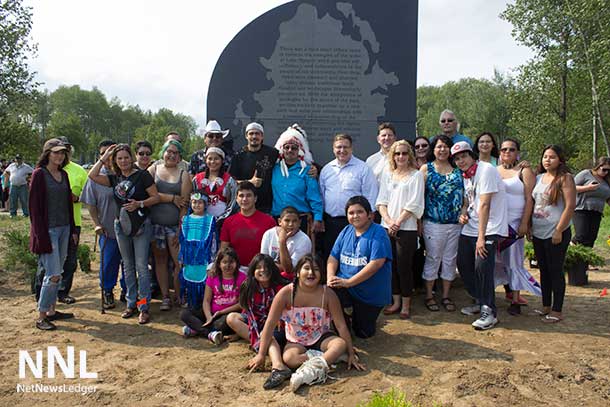

THUNDER BAY – On February 16th, Gull Bay First Nation (“Gull Bay”) filed a lawsuit in the Ontario Superior Court of Justice to remedy a 166-year-old error: the First Nation has never been allotted the entire reserve that was negotiated in the 1850 Robinson-Superior Treaty.
Chief Wilfred King explains: “Our reserve at Gull River is only a fraction of the size negotiated in the Treaty process, and although this error has previously been brought to the governments’ attention, it has never been fixed. The governments of Canada and Ontario have refused to perform their treaty obligations and did not act to preserve our land rights, so we are forced to bring our claims to the Court.”
In a statement issued by GBFN, “Early in the 1850s the Crown discovered that government officials failed to establish the proper reserves promised in the Robinson Treaties. While the Crown promptly fixed this mistake for some bands and has made further settlements with other bands in recent years, the governments have consistently avoided dealing with Gull Bay’s claims. Gull Bay now seeks to have the reserve recognized that should have been established in 1850, and seeks damages for the timber and other resources unlawfully taken since then”.
Chief King and Gull Bay have attempted to work with the governments to resolve this longstanding problem and to engage in discussions leading to a negotiated settlement. He recently met with the Government of Ontario in the hope of beginning a process that will lead to the respectful resolution of this claim.

Chief King expressed his determination to see this matter resolved, saying: “Our Nation wants a fair and just resolution of this longstanding issue. It has always been our preference to work together to address the errors of the past. We have filed our law suit to ensure our rights are protected under the Treaty, and we hope that the governments will move quickly to negotiate this dispute rather than force it to proceed through litigation.”
Gull Bay Backgrounder
The Robinson Treaties were made in 1850 between the Crown and the Anishinaabe people who inhabited the Lake Superior and Lake Huron areas. The treaties were to create reserves that were identified at the time the treaties were negotiated.
The written version of the Treaty describes a reserve at Gull River, four miles square in size. But at that time, the indigenous people in the region were not familiar with the concept of “miles”. They were more familiar with “leagues” as a unit of distance because of their contact with French Fur Traders, and they entered into the treaty process with the Crown on that understanding.
In the early 1850s, as surveyors began to mark out the reserve lands, they became aware of the error recorded in the Treaty and notified the Crown. The Crown’s representatives confirmed the error and the reason for the misunderstanding. At that time, other Robinson Treaty reserves were adjusted to correct this misunderstanding recorded in the written Treaties, and some First Nations were given larger reserves to address this error.
When the Crown got around to surveying the Gull River reserve for the very first time in 1887 (some 37 years after the treaty negotiations had occurred), despite the early notice of the error in recording the size of the Reserve, Gull Bay’s land was set out roughly according to the erroneous measures written in the treaty.
Sadly, the Chiefs of Gull Bay who had negotiated the size and location of the Reserve in 1850 were deceased by the time the Crown decided to survey the Reserve. To add insult to injury, the Crown had failed to keep a record of the negotiations in which the understandings of the parties respecting the Gull River Reserve may have been described. As a result, Gull Bay’s Reserve at Gull River is far smaller than promised in the negotiations, even though its basis had already been shown to be a misinterpretation of the negotiated agreement.
